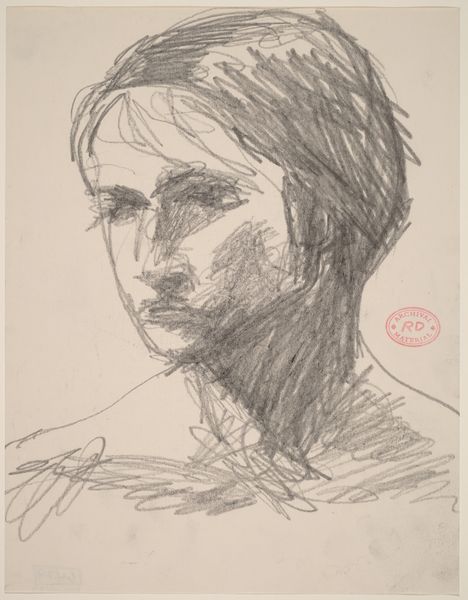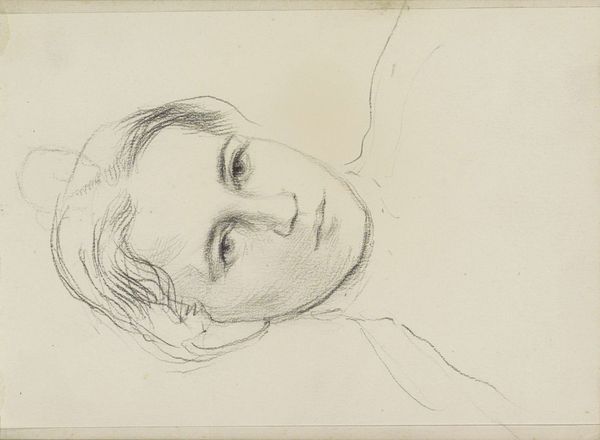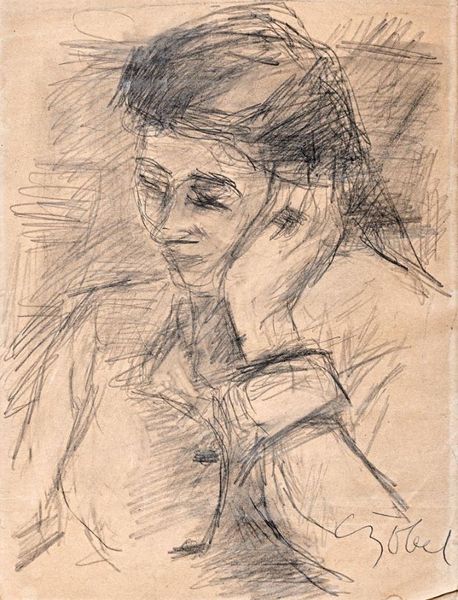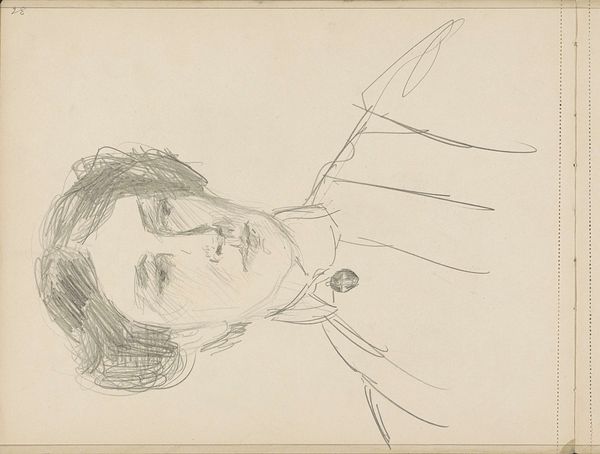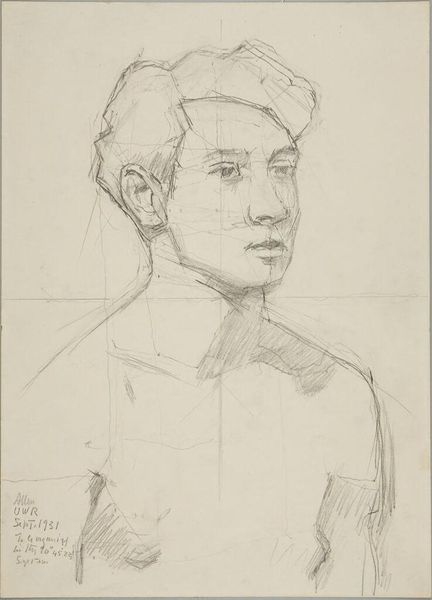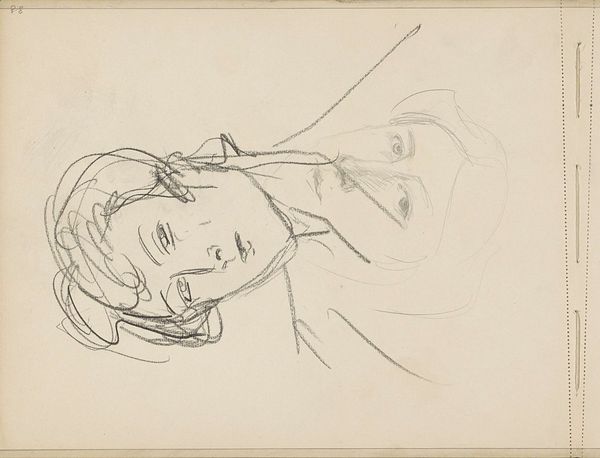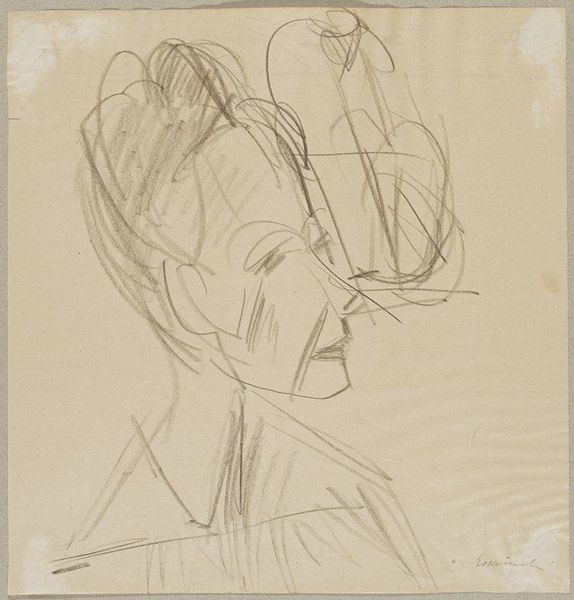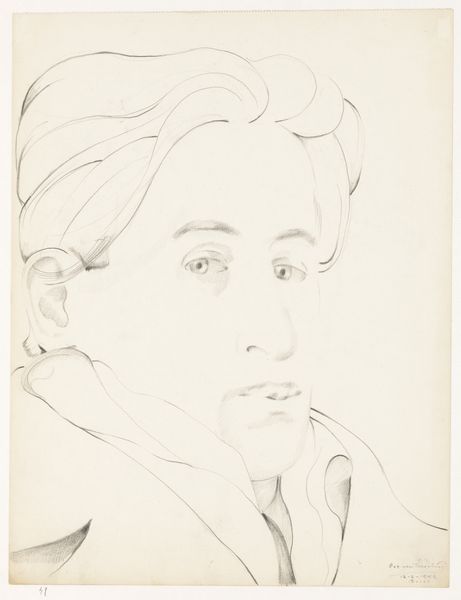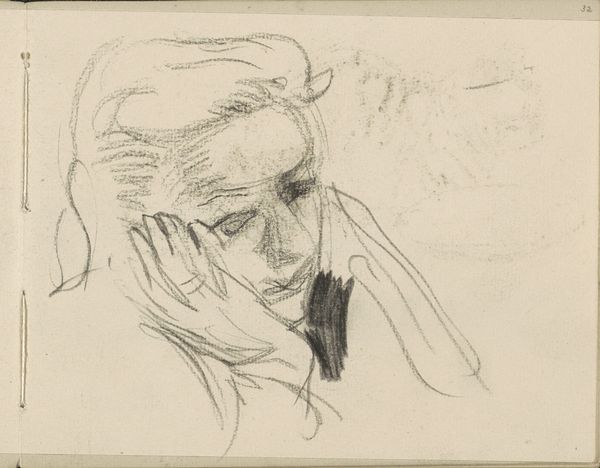
drawing, pencil
#
portrait
#
drawing
#
caricature
#
figuration
#
pencil drawing
#
pencil
#
portrait drawing
#
academic-art
Dimensions: height 121 mm, width 88 mm
Copyright: Rijks Museum: Open Domain
Curator: Here we have "Vrouwenhoofd, de hand op het hoofd" – or "Head of a Woman, Hand on Head" – a compelling pencil drawing crafted sometime between 1848 and 1927, attributed to August Allebé. It's currently part of the Rijksmuseum's collection. Editor: My immediate impression is one of quiet introspection. There’s a vulnerability in her gaze, as if we've caught her in a moment of profound thought. The sketchy quality of the pencil lines only adds to that feeling of transience, like a fleeting idea captured on paper. Curator: Absolutely, the gestural lines give the impression of immediacy, but look closely at how the artist renders the fall of light across her face and the delicate modeling of the hand. These elements reveal a foundation in academic art principles. Editor: I see that, and it’s quite effective. The diagonal lines of the torso, how they're cut off at the base...It feels incomplete yet potent, more of an emotional study than a polished portrait. I am wondering if this is just an artistic representation or the subject has something more profound and her emotional situation is clearly shown. Curator: The positioning of the hand, the slight tilt of the head - it could suggest various internal states: contemplation, perhaps worry, or even a touch of weariness. Allebé leaves it open to interpretation. It reminds me of the sort of raw expressiveness you see in the early sketches of Klimt. Editor: True! It also makes me think about the power of suggestion. With just a few well-placed lines, Allebé conveys so much about the woman's inner life. There’s a certain intimacy created, almost as if you’re peeking into her private world. Curator: I appreciate how this piece offers a quiet contrast to many of the grand historical paintings in the Rijksmuseum. It's a reminder that profound artistic expression can be found in the most subtle of forms. Editor: Yes, it invites us to pause and reflect, not just on the woman depicted, but on the shared human experience of contemplation and emotion.
Comments
No comments
Be the first to comment and join the conversation on the ultimate creative platform.

